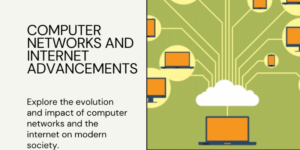Misogyny—defined as the hatred, contempt, or prejudice against women—has been a persistent feature of human societies, embedded in cultural, political, and economic systems. While misogyny is often associated with overt acts of violence or abuse, scholars emphasise that it operates as a structural phenomenon, reinforced through institutions, media, education, religion, and law (Manne, 2017). Contemporary debates highlight not only the individual attitudes of misogynists but also the systemic reproduction of gender inequality. This essay examines the historical roots of misogyny, its manifestations in education, law, media, and digital spaces, and strategies for addressing it.
Historical Roots of Misogyny
Misogyny has deep philosophical and religious foundations. In ancient Greek philosophy, Aristotle described women as “defective men,” thereby naturalising gender hierarchies (Schroeder, 1989). Similarly, medieval religious interpretations reinforced stereotypes of women as morally weaker and intellectually inferior (Tasbih et al., 2024). These traditions provided intellectual legitimacy to patriarchal structures that have endured across centuries.
In European thought, fin-de-siècle literature often combined misogyny with anxieties about modernity. Weininger’s Sex and Character (1903) framed women as irrational beings, influencing cultural and political discourses in Austria and beyond (Schwartz, 2005). These historical examples reveal that misogyny is not merely personal prejudice but a cultural framework shaping institutions and ideologies.
Misogyny in Education
Educational systems are critical in either reinforcing or challenging misogynistic attitudes. Research into school textbooks reveals that curricula often embed androcentrism, with male achievements prioritised over women’s contributions (Singh, 2019). For example, high school history texts in India largely marginalised women’s voices, perpetuating patriarchal norms.
In higher education, legal textbooks have been criticised for their gender bias. Coombs (1988) highlighted how criminal law texts trivialised or ignored violence against women, reinforcing misogynistic assumptions within the legal profession. Similarly, Ferree and Hall (1996) showed how sociology textbooks excluded feminist perspectives, marginalising women’s experiences of inequality. These findings underscore the role of pedagogy in shaping gendered worldviews.
Misogyny and Law
Legal systems have historically codified misogyny. For instance, inheritance laws in Islamic contexts have been debated for their gendered implications, with some interpretations restricting women’s rights. However, feminist scholars challenge these as misogynistic misreadings of sacred texts, advocating reinterpretations that align with gender justice (Chaudhry, 1997; Tasbih et al., 2024).
In Western contexts, feminist legal critiques point to the Socratic method in legal education as reinforcing patriarchal dominance, where women’s voices are marginalised and silenced (Garner, 2000). Misogyny in law is not only about discriminatory statutes but also about the cultural practices of legal discourse.
Misogyny in Media and Popular Culture
Media is a powerful arena where misogyny is normalised and resisted. In music, Cable (2017) documents how contemporary pop lyrics perpetuate rape culture, framing violence against women as entertainment. Similarly, Johnson’s reputation as a misogynist in literary anthologies reveals how canon formation sustains gender bias (Basker, 1997).
Digital media has intensified this trend. Burgess et al. (2017) explored online misogyny during Gamergate, where feminist critics like Anita Sarkeesian were harassed, illustrating the hostility women face in male-dominated digital spaces. Bunker-Bramley (2024) further shows how school staff perceive online misogyny as a growing problem requiring educational interventions.
Moreover, fan communities reveal “toxic behaviours” where misogyny intersects with racism and homophobia, reinforcing hostile online environments (Bourdaa & Escurignan, 2024).
Misogyny and Digital Culture
The rise of the manosphere and incel subculture demonstrates how misogyny evolves in digital spaces. Research on online forums highlights how men’s grievances about gender equality are reframed as attacks on feminism, normalising violence against women (Preston & Halpin, 2025). The BIASLY dataset demonstrates how subtle misogyny—such as microaggressions and gendered jokes—reinforces inequality (Sheppard et al., 2024).
Examples such as incel-related violence show the dangers of online misogyny translating into offline harm. As digital platforms amplify misogynistic narratives, feminist digital activism in turn challenges them, exemplifying a struggle for visibility and justice (Ingram, 2025).
Misogyny in Medicine and Health
Medical misogyny refers to the systematic dismissal of women’s health concerns. Womersley (2025) documents cases of women denied necessary treatment due to patriarchal biases in healthcare systems. Albanowski (2022) illustrates how women’s narratives of illness often reveal underlying misogyny in medical practice, where their pain is trivialised or psychologised rather than treated.
The case of tokophobia (fear of childbirth) exemplifies how women’s reproductive health is medicalised without addressing the underlying misogynistic assumptions in care delivery (Womersley, 2025). Such findings highlight the intersection of gender and institutional neglect in healthcare.
Resistance and Feminist Interventions
Feminist responses to misogyny are multi-layered. Islamic feminists reinterpret sacred texts to challenge patriarchal readings (Tasbih et al., 2024). In education, gender-sensitive curricula are promoted to dismantle androcentric pedagogy (McGuire, 2022). Digital feminist activism uses social media to counter online misogyny, mobilising solidarity and accountability (Zhu, 2024).
Textbooks themselves can become tools of empowerment. Handbooks on gender-sensitive curricula encourage critical pedagogy that equips students to recognise misogyny as systemic, not individual (McGuire, 2022). Thus, resistance involves both cultural critique and institutional reform.
Misogyny is historically entrenched yet continuously reshaped in contemporary society. It manifests through education, law, media, medicine, and digital culture, sustaining systemic inequalities. However, feminist scholarship and activism provide counter-narratives and strategies for change, emphasising reinterpretation, reform, and resistance.
To address misogyny effectively, efforts must go beyond targeting individual attitudes to transform institutions and cultural practices that perpetuate gender oppression. Only then can societies move towards genuine equality.
References
Albanowski, M. (2022). Literature, medicine, and misogyny: a collection of narratives. University of Pittsburgh. Available at: http://d-scholarship.pitt.edu/42704/.
Basker, J.G. (1997). Myth upon myth: Johnson, gender, and the misogyny question. Age of Johnson. Available at: https://www.academia.edu/download/74688147/Myth_Upon_Myth.pdf.
Bourdaa, M. & Escurignan, J. (2024). Misogyny, homophobia, racism and online harassment: fan communities. Questions de communication. Available at: https://journals.openedition.org/questionsdecommunication/39924
Burgess, M.C.R., Byars, F. & Sadeghi-Azar, L. (2017). Online misogyny targeting feminist activism: Anita Sarkeesian and Gamergate. In: The Wiley Handbook of Violence and Aggression. Wiley.
Cable, C. (2017). I sing of misogyny and sexual assault: Rape culture in contemporary American pop music. University of Iowa.
Chaudhry, Z. (1997). The myth of misogyny: a reanalysis of women’s inheritance in Islamic law. Albany Law Review, 61.
Coombs, M.I. (1988). Crime in the stacks: A feminist response to a criminal law textbook. Journal of Legal Education, 38.
Ferree, M.M. & Hall, E.J. (1996). Rethinking stratification from a feminist perspective: Gender, race, and class in mainstream textbooks. American Sociological Review, 61(6), pp. 929-950.
Garner, D.D. (2000). Socratic misogyny: Analysing feminist criticisms of Socratic teaching in legal education. BYU Law Review.
Ingram, P. (2025). Mainstreaming misogyny in the manosphere. In: Handbook on Gender and Digital Media. Edward Elgar.
Manne, K. (2017). Down Girl: The Logic of Misogyny. Oxford University Press.
McGuire, K. (2022). Handbook for creating a gender-sensitive curriculum. University of Central Lancashire. Available at: https://clok.uclan.ac.uk/40382/.
Schwartz, A. (2005). Austrian fin-de-siècle gender heteroglossia: misogyny, feminism, and viriphobia. German Studies Review, 28(2), pp. 285-310.
Schroeder, J.L. (1989). Feminism historicized: Medieval misogynist stereotypes in contemporary feminist jurisprudence. Iowa Law Review, 75.
Sheppard, B. et al. (2024). BIASLY: An expert-annotated dataset for subtle misogyny detection. Findings of ACL 2024. Available at: https://aclanthology.org/2024.findings-acl.24.pdf.
Singh, K. (2019). Egalitarian pedagogy: Reviewing androcentrism in Indian high-school education. International Journal of Social Science and Economic Research, 4(5).
Tasbih, T., Langaji, A., Hafid, S.A. & Bakti, A.F. (2024). Islamic feminists’ rejection of misogynistic hadiths for gender justice in Makassar, Indonesia. Samarah: Jurnal Hukum Keluarga.
Womersley, K. (2025). A chronicle of medical misogyny. The Lancet.
Zhu, X. (2024). Feminism on social media: Generalised misogyny. SHS Web of Conferences.









